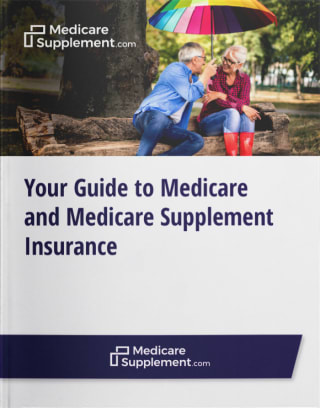Medicare is the federal health insurance program for people age 65 and older, and certain younger people with disabilities.
Over 58 million people are enrolled in Medicare, according to 2023 data from the Kaiser Family Foundation.1
What Are the Parts of Medicare?
There are four parts of Medicare: Part A, Part B, Part C, and Part D. Each part covers different services.
- Medicare Part A and Part B are provided by the federal government
- Part C and Part D are provided by private insurance companies.
Medicare terminology can get a little confusing. The different parts are also often referred to in the following ways:
- Parts A & B combined: Original Medicare
- Part C: Medicare Advantage
- Part D: Prescription Drug Coverage
What does Medicare cover?
Each part of Medicare provides different health care benefits:
- Medicare Part A covers hospital and other inpatient care. Most people qualify for “premium-free” Part A after having worked and paid taxes for a certain amount of time.
- Medicare Part B is optional and provides medical insurance that covers doctors visits, lab tests and many other outpatient services along with medical equipment. Part A and Part B together are referred to as Original Medicare.
- Part C is also known as Medicare Advantage, and is a set of private health insurance plans designed as an alternative to Original Medicare. These plans must provide at least the same minimum benefits as Original Medicare and may also offer additional benefits.
- Part D plans are private Medicare prescription drug plans.
More about Medicare benefits
Learn more about Medicare coverage of common procedures
Medicare Part A hospital insurance
Part A offers hospital insurance benefits and is the first half of Original Medicare. It covers inpatient hospital stays, hospice care, and skilled nursing facility care.
In 2024, the deductible for Medicare Part A hospital care is $1,632 per benefit period.
A benefit period under Part A begins the day you’re admitted to the hospital and ends when you’ve been discharged for at least 60 days. If you’ve been out of the hospital for more than 60 days and are admitted again, a new benefit period begins.
You can actually encounter multiple Part A benefit periods in the same calendar year if you’re hospitalized more than once, and each benefit period requires you to meet the Part A deductible.
If you are admitted for inpatient hospital care, you don't have to pay Medicare Part A coinsurance for your first 60 days of your stay. However, you may face coinsurance costs for longer stays.
- If you’re in the hospital between 61 and 90 days during one benefit period, each day will cost $408 in 2024.
- If you’re in the hospital for more than 90 days during one benefit period, each day beyond that will cost $816 in 2024.
- Starting on Day 91, you start tapping into your lifetime reserve days for Medicare Part A. You have 60 reserve days. Once they are used up and you encounter a long hospitalization, you are responsible for all costs starting with Day 91 in the hospital.
More about Medicare Part A
Medicare Part B medical insurance
Part B offers medical insurance benefits and is the second half of Original Medicare. It covers outpatient hospital care, preventative care, doctors services, and other services.
You must have Part B to qualify for Medicare add-ons such as Medicare Supplement Insurance (Medigap) and Medicare Advantage.
The standard Medicare Part B premium in 2024 is $174.70 per month, but premiums can vary based on your income. The annual Medicare Part B deductible in 2024 is $240 per year.
More about Medicare Part B
Medicare Part C (Medicare Advantage)
Part C is insurance that covers the same things as Original Medicare, but it is provided by private companies and usually includes additional benefits, such as prescription drug coverage, vision, dental, and wellness programs.
Learn more about Medicare Advantage plans and the coverage they can provide.
Medicare Part D prescription drug coverage
Part D is the Prescription Drug Coverage portion of Medicare. The plans are offered by private insurers and not the federal government. It is an optional add-on. The prescription drugs covered and the costs of Part D plans will vary based on the insurance provider.
More about Medicare Part D
Medicare eligibility and enrollment
In order to qualify for Medicare coverage, you must be at least 65 years old and a citizen (or permanent legal resident) of the United States. You also may qualify if you are under 65 and have a disability.
Most seniors will be enrolled in Original Medicare automatically. If not, applicants can apply during certain enrollment periods.
More about Medicare eligibility and enrollment
Your Medicare Coverage Can Be Supplemented
Medicare Supplement Insurance, also known as Medigap, is insurance that helps cover some of the out-of-pocket costs of Original Medicare.
There are generally up to 10 standardized Medigap plans to choose from in most states, and each plan provides a unique set of benefits.


